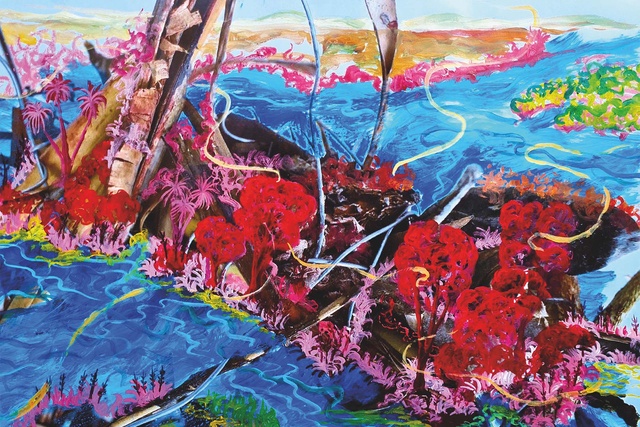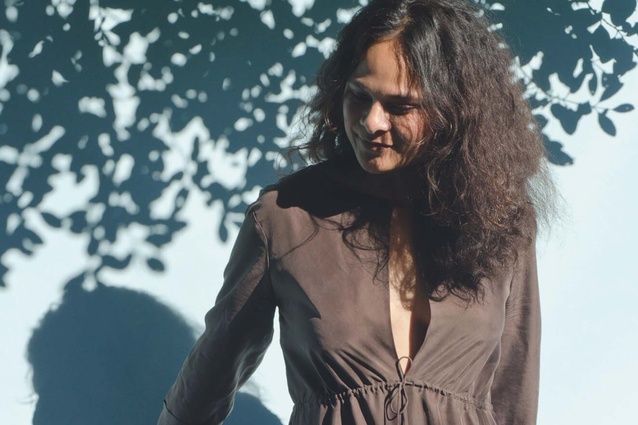Opinion — Architecture: to love people and place
Karamia Müller looks forward to a return to people and place with a renewed sense of aroha.
Dear reader, it is the Sunday before the Prime Minister is to announce whether or not Tāmaki Makaurau will stay in a level four lockdown. It has been four weeks and we will find out if it is to be more. Which is to say, I feel a touch, shall we say, cuckoo. What and how does one write an opinion piece in such a mood? You are about to find out. (Siri – look up architecture opinion piece).
Curiously, my own cuckoo state of mind is backdropped by the earthly calm that a lockdown precipitates, producing a real longing for people and place: to be with people and with place. My most devotional experiences of the architectural discipline have been, and continue to be, when people and place are brought together under metaphorical and physical roofs. In this period of quiet, civic buildings can feel, from the outside looking in, as though they are in the early stages of decline. It is as if, in the quietness of lockdown, the limitations of neoliberalism come home to roost as more than an abstract and distant gigantic cog impossible to stop turning, and more as an ideological consequence shaping our collective realities. Emptied out of all the daily doings, they can appear like looming concrete tombs of a life pre-Covid. (I am sorry; hopefully, it lightens up from here on, although I cannot promise anything).
My current makeshift workspace takes in oblique views of the city and her built realm, and this gives architecture’s rising forms a sense of the monumental. Tower blocks that went up in the past year appear, from my perch, as if already a memorial to our current moment. When will we circulate about them like we once did pre-pandemic? And, as the daily numbers come in – will we? While we did return to them in the past year, since we were last asked to step into our bubbles, with new viral strains developing, it is certain that we are living through an extraordinary event that will continue to play out for some time. While public health specialists across the world present different perspectives on national responses to Covid, cities and their buildings look on, towns and their centres bear witness to absence, and bustling airports seem as far, far away as fairy tales. One has a sense that, perhaps, we are eerily spiralling into extinction with the noiselessness of outer space. Still, domestic spaces, by contrast, are now offices, classrooms, crèches, meeting rooms, gyms: hosting digital occasions that keep us connected, until we can come back together again.
Reflecting on this, I marvel repeatedly that we humans are magnificent in our resilience. We are so adaptive in the matters of survival; this can give us reason to pause and consider what would happen if we were to act with similar commitment to other challenges. As a new season opens a fresh blue dome for a sky, and the air is fragranced with spring’s shy flush, this internalised time feels to me like an invitation to fall in love with the world and its future potentials. I use the word love, and the metaphor ‘fall in love’, intentionally here. I mean to conjure the same sensations we traditionally reserve for other human beings: when all the lovely feelings flood our bodies and make us over anew, and capable of acting on that newness. This is when, according to Wikipedia, our emotional states are so positive that we are capable of sublime virtues, good habits, the deepest interpersonal affections and openness to the simplest of pleasures.1
An Aristotelian way of thinking is that one of the values of love is it promotes self-knowledge, by way of the beloved acting as a mirror reflecting the self.2 To me, these ideas can be strung together in a way that I find hopeful about architecture in service of people and place, and the possibilities of the future, especially when the globe can feel as though it is continually under a flashing red alert light. If we are to take up the invitation to fall in the love with the world, and see ourselves as capable of sublime virtue, what is in the mirror that reflects to us about how we are, and what does this mean for the discipline and its practitioners?

If we were to take in our reflection right now, we would find the crisis of climate change gazing back. She has, in fact, been gazing at us for some time. The National Institute of Water and Atmospheric Research’s climate data for winter 2021 shows we just experienced our warmest winter on record; seven out of the 10 warmest winters since 1909 occurred since 2000.3 Our beloved is, very literally, hot for us. And we know it. The ensuing discussion of Te Kāhui Whaihanga New Zealand Institute of Architects and New Zealand Registered Architects Board in response to editor Chris Barton’s challenge to the industry proves this.4 Reading the responses, I felt heartened that our industry knows that the debate on climate change has well been had so, now, we must turn our minds to action.
While denial remains a position, it is uplifting that, in our profession, it is the perspective of the outlier. Barton argued so excitingly for a more engaged response from the industry and its regulating, institutional bodies for accountability to sustainability, it gave me pause. What motivates us when there is so much to do, and the task is overwhelmingly too big for the individual but depends on the many parts of the individual to succeed? As I take in the empty streets, and fellow lockdowneers behind masks, I feel excited to return to people and place with a renewed sense of care, love and aroha, for the many relationships between our industry and the world. I am excited, in particular, about the relationships with our lands, sky and waters, and those that reside in them, human and non-human. It may sound a touch cuckoo, but it is about falling in love with people and place, again, and again.
1 Wikipedia contributors, ‘Love’, Wikipedia, The Free Encyclopedia. en.wikipedia.org/w/index.php?title= Love&oldid=1044831987 (accessed 23 September 2021).
2 Bennett Helm, ‘Love’, in the Stanford Encyclopedia of Philosophy, edited by Edward N. Zalta. plato.stanford.edu/archives/fall2021/entries/love/ (accessed 13 September 2021).
3 NIWA Taihoro Nukurangi, ‘Record warmth so far this winter’, media release 5 August 2021. niwa.co.nz/news/record-warmth-so-far-this-winter (accessed 13 September 2021).
4 Chris Barton, ‘Editorial: Chris Barton on a duty of care’. architecturenow.co.nz/articles/editorial-chris-barton-on-a-duty-of-care/ (accessed 13 September 2021).










